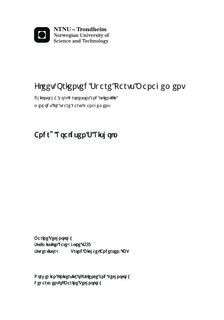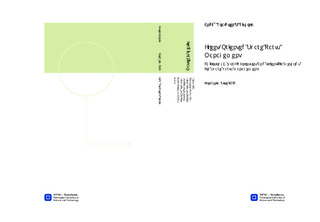| dc.description.abstract | There are 22 construction support vessels in the DOF Group that have active heave compensated cranes with lifting capacity of above 50 tonnes. The Brazilian flagged Skandi Salvador was chosen to represent the fleet in terms of specifications, since she was close to the average numbers for size, age and capacity. She has a NOV crane with SWL of 140 t.
There are two main types of maintenance; preventive maintenance and corrective maintenance. Fault distributions can be used to evaluate which type of maintenance that should be performed, and in which intervals.
Maintenance management should be a process of continuous improvement, with focus on planning, execution, reporting and analysis in order to establish and revise resource needs, goals and requirements, and the maintenance program itself.
Reliability Centered Maintenance (RCM) and Risk Based Inspection (RBI) are useful methods to establish an optimal maintenance and inspection program, based on functional demands, functional faults, and prevention of these functional faults.
The Economic Order Quantity (EOQ) concept and the ?Newsboy? model are mathematical decision models that can be used to decide number of spares to be ordered, order point, safety level, and investments in capital spare parts.
Seven areas of improvement for the maintenance practice in the DOF Group were proposed:
1. Informal experience to be made formal.
2. Formalize the maintenance management processes.
3. Introduce scientific methods like Reliability Centered Maintenance and Risk Based Inspection to establish maintenance program.
4. Introduce scientific methods for spare parts management.
5. Introduce a fleet-oriented philosophy for all aspects of the maintenance practice, especially for spare parts management.
6. Bring the users closer to decisions regarding the MMS
7. Increase practical usability of critical equipment classification.
The main objective of spare parts management is to find the optimal numbers, types and locations for spare parts needed to perform the desired tasks with as high uptime as possible. In effect, to have spare parts available when they are needed, but to avoid stocking spare parts that are not needed.
At the heart of the proposed spare parts management philosophy lie fleet orientation, formalization, and scientific methods.
A spare part evaluation work process is proposed, consisting of 6 phases:
1. Basic input. Where the actor responsible collects the data necessary for making the evaluation.
2. Spare part categorization. The spare parts are categorized in three categories, based on given criteria.
3. Risk assessment. A consequence classification is carried out to decide the desired probability of having a spare available during procurement lead time for operational spares and consumables.
4. Decision tools. Two different decision tools are utilized to make optimal decisions for the spare parts considered.
5. Output. The decisions are summarized and carried out. Information related to the capital spare parts decisions are entered into a newly established capital spare parts experience register.
6. MMS. The results from the spare part evaluations are inserted in the maintenance management system.
An important part of the proposed spare parts management philosophy is the ability to make optimal decisions in changing environments. If the evaluation process is not dynamic, the actors responsible will soon revert to the former, subjective methods for making decisions.
So, whenever a change in the operation of a vessel is planned or registered, the project/vessel manager should ask himself how this change might affect the input parameters of the decision tools. This forms the basis for the proposed dynamic spare part evaluation work process.
The decision tool for capital spares is built around the relation between the expected cost of holding a spare part and not needing it, versus the expected cost of not having it when you need it.
When basing the evaluation on significantly lower delivery times than estimated by the manufacturer, the optimal capital spare parts investment decisions for the offshore crane on Skandi Salvador were to purchase all the recommended parts, except the largest crane wire. Using the estimated delivery times from the manufacturer, the optimal decisions were clearly to purchase all the recommended spare parts.
At the delivery time of Skandi Salvador, the DOF Group chose to only purchase four of the items on the list of recommended capital spare parts. The capital spare parts investment decisions taken by the DOF Group at the delivery time of the vessel are therefore considered sub-optimal compared to the findings in this thesis, and the DOF Group is advised to purchase the remaining capital spare parts on the list of recommended spare parts.
The decision tool for operational spares and consumables finds the optimal order quantity, order point and safety stock. An important input parameter is the desired probability of having enough spare during procurement lead time. This parameter is set based on the consequence classification for the part.
The decision tool was used to make decisions for optimal order quantity, order point and safety stock for a list of recommended spare parts for the offshore crane on Skandi Salvador. | |

